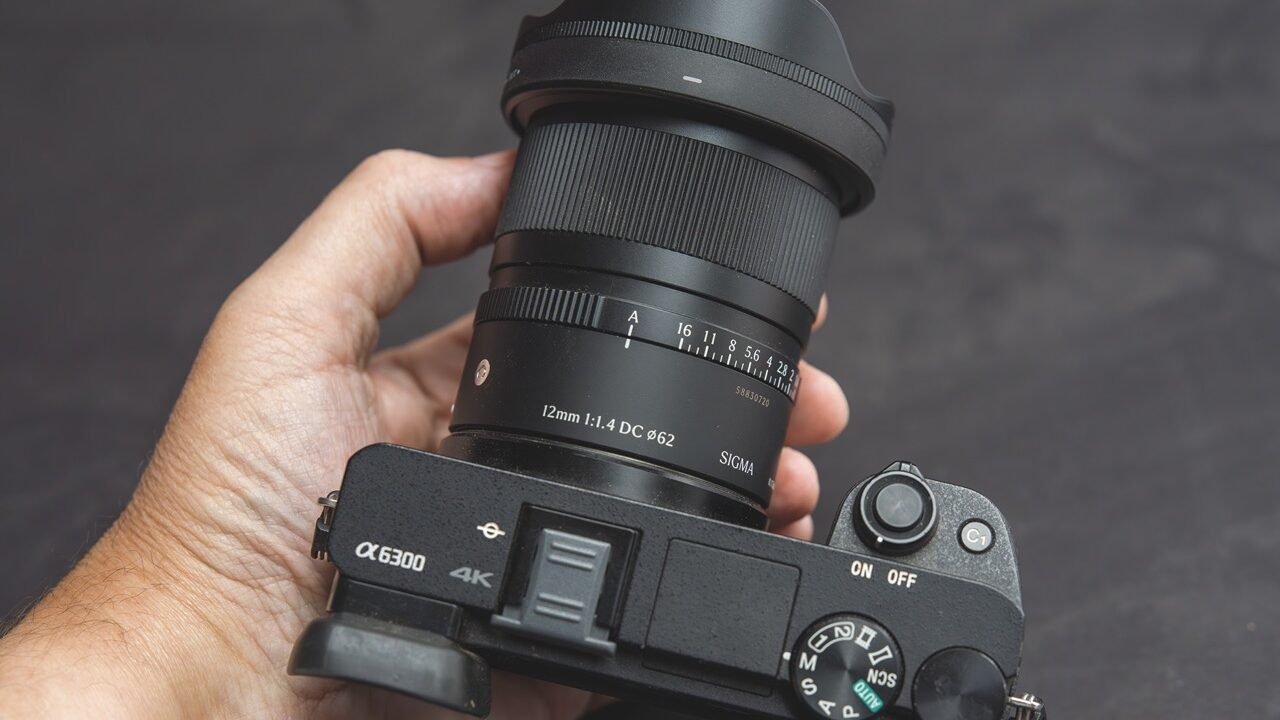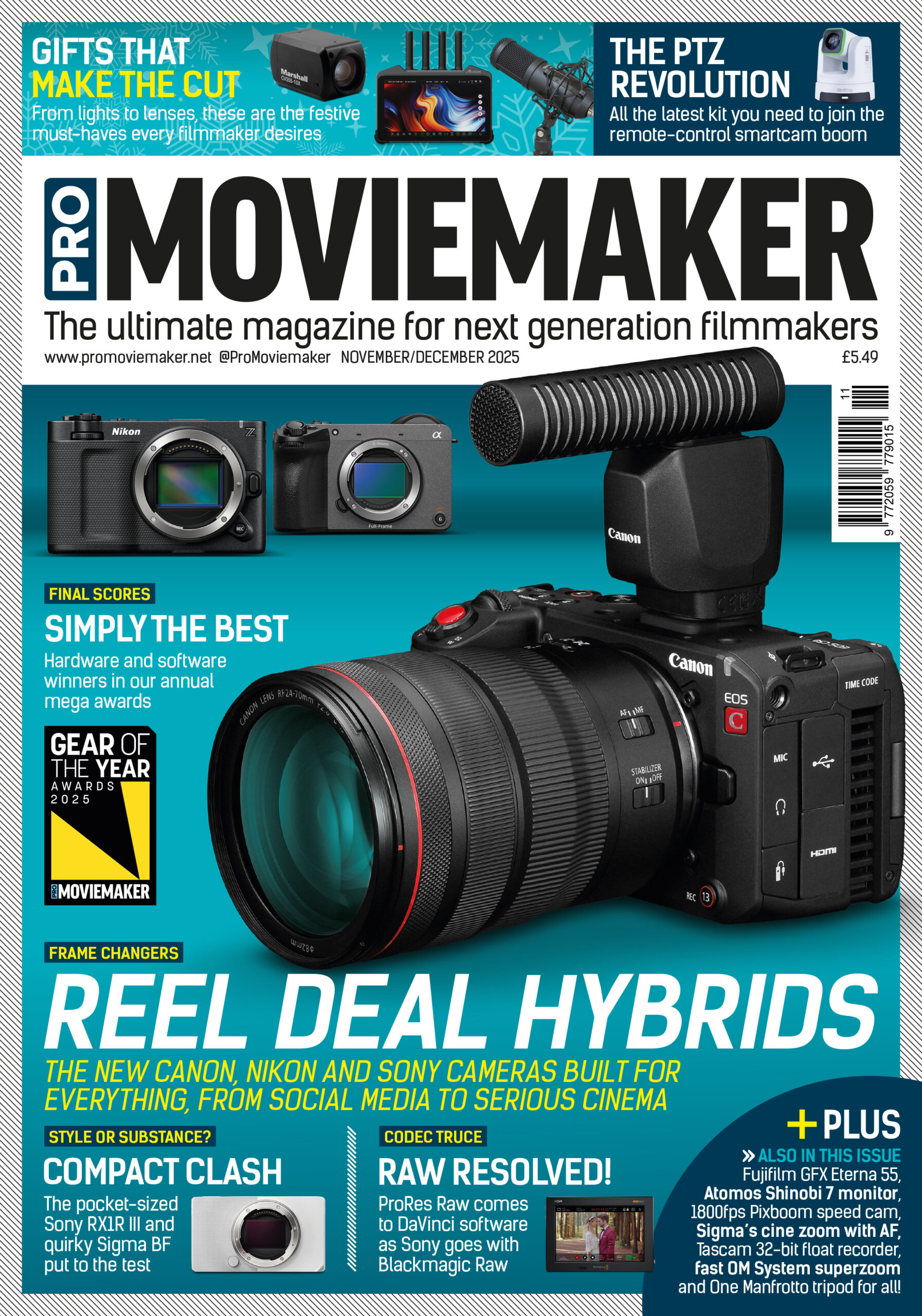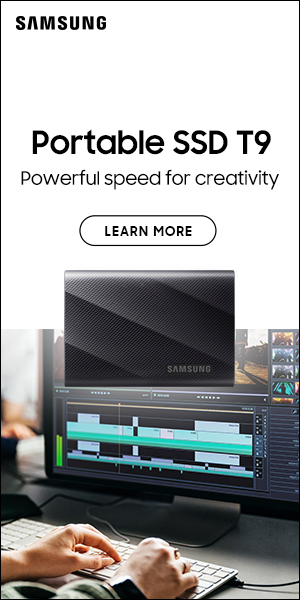
Mini test: Sigma 12mm f/1.4 DC Contemporary
Posted on Nov 18, 2025 by Pro Moviemaker
In our review of the Sigma 12mm f/1.4 DC Contemporary, we explore how this ultra-wide, fast prime breathes new life into APS-C filmmaking
Words Adam Duckworth
With a headlong rush towards full-frame and even larger sensors, filmmakers who prefer the compact Super 35-size APS-C sensor may feel left out when choosing fast glass. Once again, Sigma has you covered with the widest f/1.4 prime available for crop-sensor mirrorless cameras.
The 12mm Contemporary joins a series of compact f/1.4 primes for APS-C cameras, including the 16, 23, 30 and 56mm. It is available in Sony E, Fujifilm X and Canon RF mounts.
With a field of view of roughly 18mm in full-frame terms, this ultra-wide, bright optic is for those working in landscapes, astrophotography, architecture, interiors and vlogging, where low-light and depth control matter. It unites ultra-wide ease and cinematic expressiveness.
Construction is made up of three double-sided aspherical elements and two SLDs (Special Low Dispersion), which suppress aberrations and deliver high resolution and contrast across the frame, even at f/1.4. Wide open, sharpness is good, improving by f/2. The periphery softens at the widest apertures but sharpens at the mid range. In practice, performance is impressive for a fast, compact lens and it’s ideal for video use.
Combined with an APS-C body like the Sony A6300 we used, the package is compact and easy to carry, but has solid build quality and weather sealing. At 225g/0.5lb and less than 7cm/2.7in, it pairs beautifully with APS-C bodies and even small gimbals.
Autofocus is driven by a quiet and smooth stepping motor and focus breathing is minimal. For Sony users, there is an aperture ring on the barrel.
The lens lacks optical stabilisation – which isn’t surprising at this focal length and with such a fast aperture.
In use, the 12mm f/1.4 delivers striking results. Landscapes rendered with dramatic perspective and wide coverage feel immersive. In low light, the f/1.4 aperture helps immensely, allowing lower ISOs. For interior scenes or architecture, distortion is noticeable but well managed and correctable in post. Some vignetting appears at f/1.4, but disappears by f/4. Chromatic aberration is modest, though under some high-contrast edges it can creep in; but Sigma’s coatings and design keep ghosting and flare in check.
For creative vlogging or run-and-gun work, the combination of light weight, fast aperture and wide field of view pays dividends. The extreme wide angle means that, to isolate a subject with strong background blur, you’ll need to be close to the subject. At 12mm, even a wide aperture still yields considerable depth-of-field compared to telephoto lenses.
For creators in spaces where light is scarce or dramatic perspective is key, this lens is a strong tool. In one package, it brings optical quality and video-capable usability to the often-overlooked APS-C wide end.
£519/$629

Specifications
- Mount: Fujifilm X, Canon RF, Sony E
- Image coverage: APS-C
- Aperture: f/1.4-16
- Aperture blades: 9, rounded
- Construction: 14 elements in 12 groups with 3 aspherical and 2 SLD glass elements
- Image stabilisation: No
- Minimum focusing: 17.2cm/ 6.8in
- Filter size: 62mm
- Dimensions (wxl): 68×69.4mm/ 2.7×2.7in
- Weight: 225g/0.5lb
Pro Moviemaker rating: 9/10
A compact and great-value APS-C super-wide
- Pros: Low weight and fast aperture
- Cons: No image stabilisation
This review was first published in the November/December 2025 issue of Pro Moviemaker









